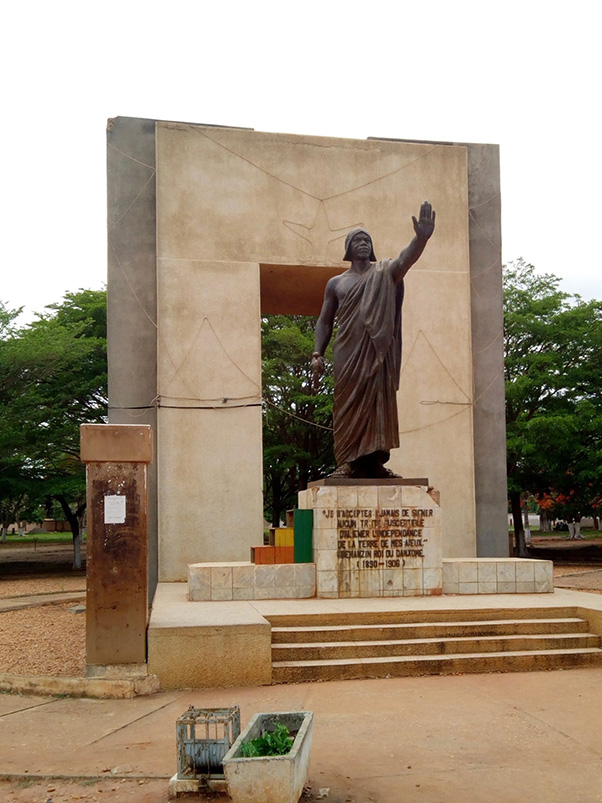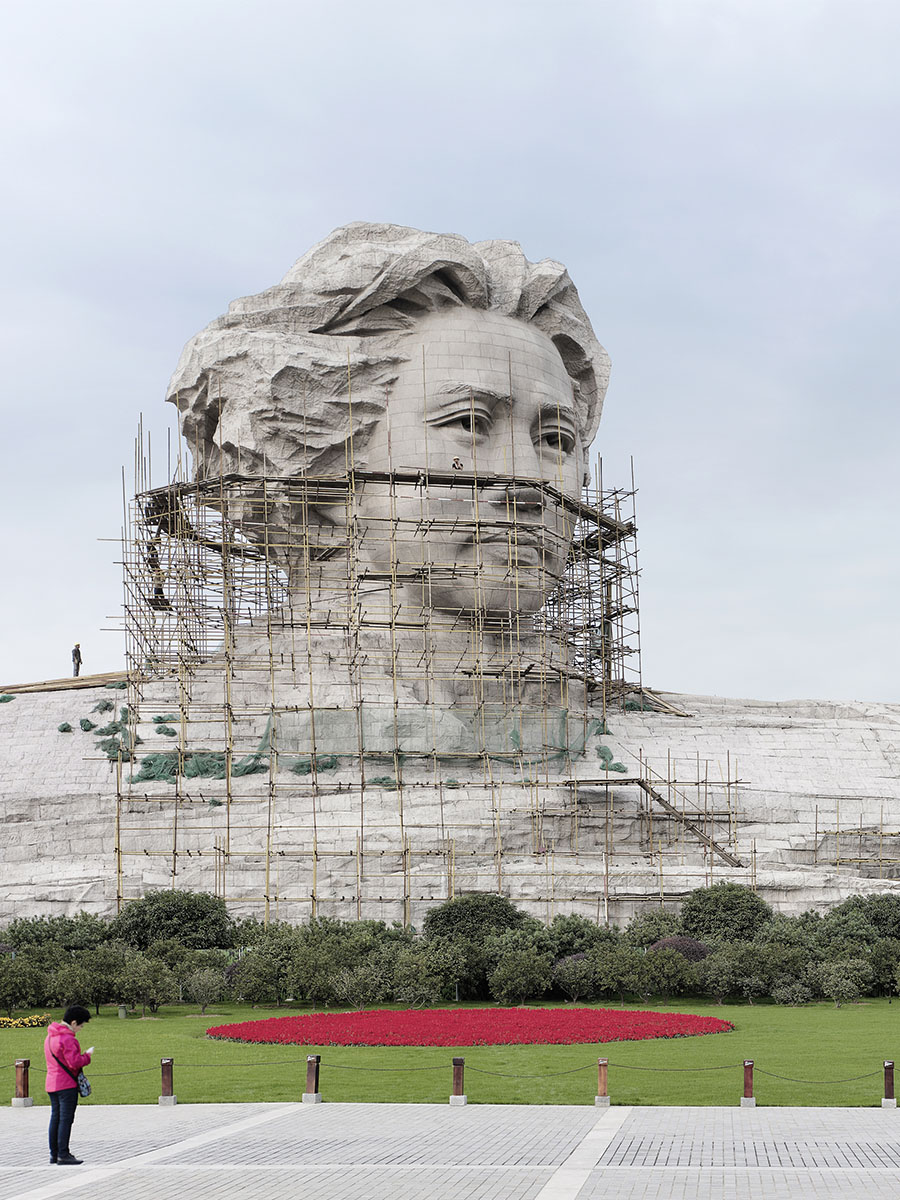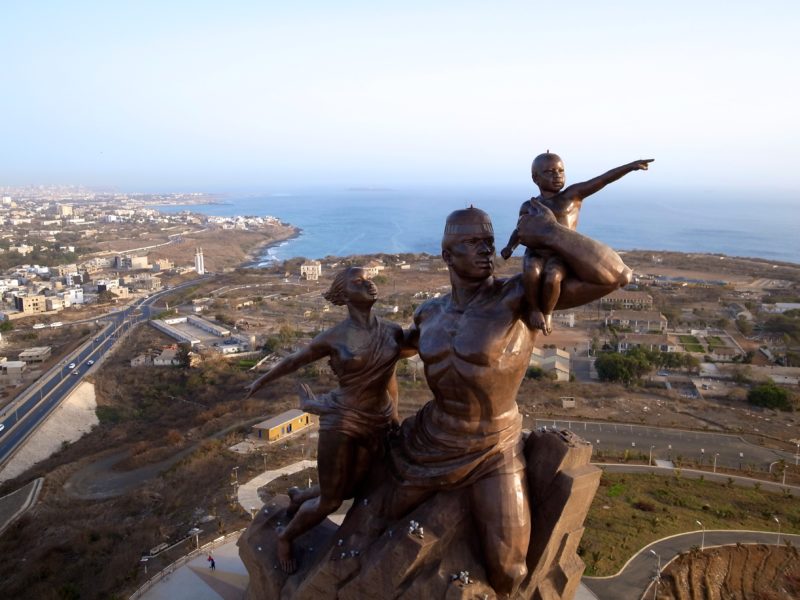
PGC4+V2M, Dakar, Senegal Copy to clipboard
14.722207, -17.495007 Copy to clipboard
Before you go
Bring water: The climb and heat can be exhausting. Stay hydrated by bringing your own water. While water sellers are often present at the top of the stairs, prices may be higher, and availability is not guaranteed.
Check for guided tours: Guided tours are often mandatory and are usually only conducted in French. Plan accordingly.
Clothing: Wear comfortable shoes and light clothing suitable for climbing and warm weather.
Entrance fee: Expect to pay around 3000-6500 CFA depending on whether you are a resident or tourist.
Elevator availability: The elevator inside the monument, which provides access to the higher levels and the viewing platform, is not always operational. Visitors should be prepared for potential unavailability and plan accordingly, especially if climbing further is not an option.
Manage expectations: The museum inside the monument features cultural and historical exhibits, but the quality is inconsistent, with limited labels, minimal explanations, and primarily French-language descriptions. Visitors seeking detailed historical context may find it lacking.
Nearby: Close to the Mosque of the Divinity and Ouakam Beach along the west Atlantic Ocean, both about 6 minutes by car.
Photography: Inside the monument, you may only take photos at certain times during guided tours.
Restrooms: Toilets at the monument may be poorly maintained.
Safety: The area around the monument is generally safe, with no significant safety concerns reported. However, as with any tourist site, visitors should remain aware of their surroundings and exercise caution, particularly in less-lit areas during evening visits.
Steps: Be prepared for 198 steps to reach the base, which can be physically demanding.
Visit duration: Plan to spend 1.5 to 2 hours at the monument. Visitors with limited time can complete the visit in an hour if they focus on key highlights.
Wind: The area can be very windy, especially on the viewing platform. Dress accordingly.
Best visit time
Mornings are the best time to visit, as the temperature is cooler, and the site is less crowded.
Late afternoons are not ideal for photos due to harsh lighting and potential glare, especially if the sun is directly behind the statue.
Weekends and holidays can be very crowded; arrive early to avoid long waits.
Clear days offer better visibility for photos and panoramic views of Dakar.
The monument is beautifully lit at night, making evening visits visually stunning. However, combining this with a daytime visit is best for clearer views and access to the museum and other facilities.
Directions
From Dakar City Center
Head north towards Ouakam. Follow the signs to the African Renaissance Monument, located on a hill. It is a 10-minute walk (500 meters) from the nearest bus stop.
Parking info
Parking is limited near the monument. Arrive early to secure a spot.
Base of the Monument Parking
Closest option for direct access to the steps leading to the monument. Limited spots available. Free but first-come, first-served. 2-minute walk (100 meters) to the base of the monument.
Ouakam Area Parking
Parking available near local shops and restaurants in Ouakam. Ideal for combining visits. Typically free but not monitored. 10-minute walk (800 meters) to the monument.
By Bus
Easily accessible by local bus/minibus (100-300 CFA). Take a bus heading towards Ouakam and get off near the monument. Budget-friendly travel. 10-minute walk (500 meters) to the monument.
Introduction
This 49 meters tall bronze statue 1 is located on top of the Collines des Mamelles – one of the twin hills – in the Senegalese 2 capital Dakar 3. It overlooks the Atlantic Ocean just outside the city in the Ouakam neighborhood.
The African Renaissance Monument was designed by renowned Senegalese architect Pierre Goudiaby Atepa 4 following a recommendation from then-president Abdoulaye Wade and commissioned to the Mansudae Overseas Projects 5, a North Korean 6 art production studio.
Excerpted interview with Pierre Goudiaby Atepa by Onejoon Che
The construction began in 2008 after two years of site preparation. Initially, the work was scheduled to be completed in December 2009, but the delays stretched into early 2010.
The official inauguration took place on April 2010, which coincided with the National Day in Senegal, a celebration commemorating the 50th anniversary of the country’s independence from France 7. Once completed, the African Renaissance Monument became the tallest statue in Africa 8 and has attracted mixed reactions.
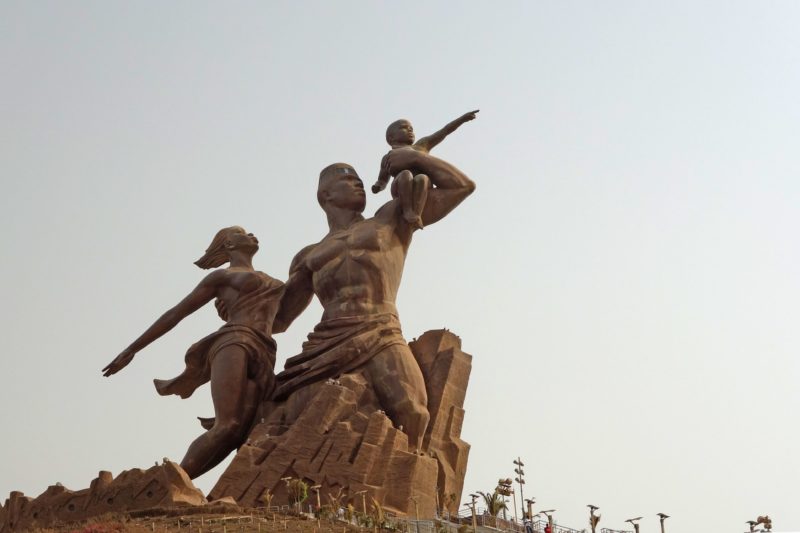
What does the African Renaissance Monument symbolize?
The monument portrays a man with a bare, ripped torso, holding an infant in one arm and guiding a woman with the other hand. The baby points ahead to signify the wonderful future. The woman extends her arm behind in a gesture to acknowledge the troubled past as her hair and the scant, gossamer-like dress are swept back by the wind.
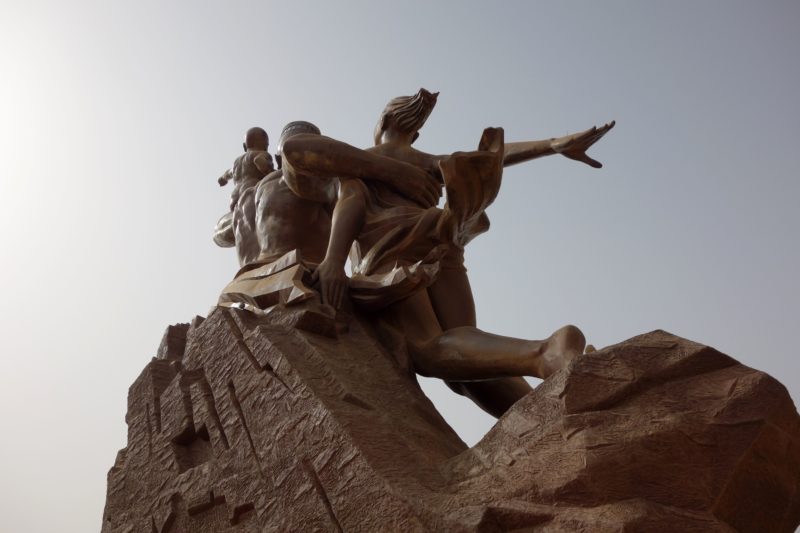
Then-President Wade said 910 that the statue symbolizes the triumph of African liberation from centuries of ignorance, intolerance, and racism. He hoped it would rival the Statue of Liberty in New York and the Eiffel Tower in Paris as a tourist destination.
The monument, the largest in Africa, was intended to celebrate the achievements of the African people, particularly in regards to emancipation from colonial grip and slavery.
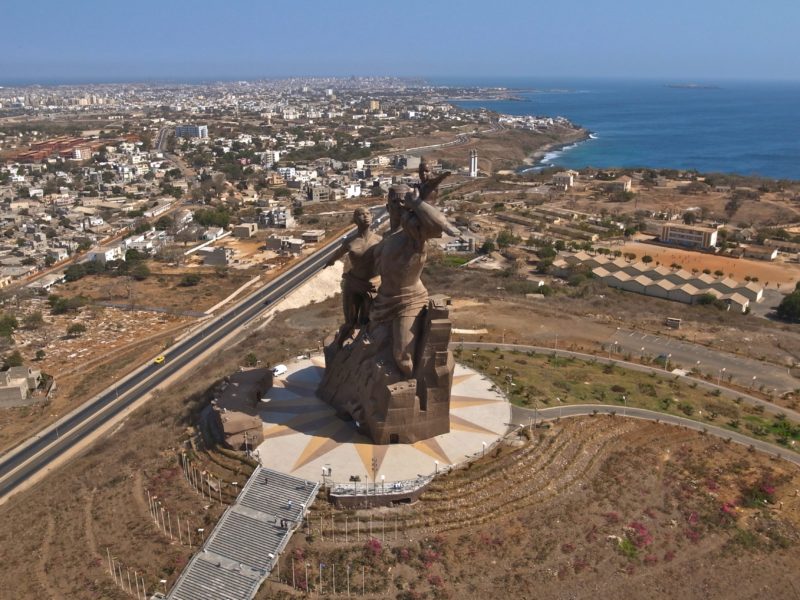
As the name suggests, the monument is based on the concept that the African people shall overcome the current challenges confronting the continent and achieve cultural, scientific, and economic renewal.
Pan-Africanism
But it goes beyond just celebrating the achievements of African people. President Wade, under whose regime the monument was constructed, is one of the last African leaders centered on African unity and Pan-Africanism.
Throughout his stint as the head of the state, he showed a keen interest in moving the continent towards greater interdependence and unification. He is known as the “last great Pan-African theorist 11“12.
For that reason, Wade has stressed more often than not that the African Renaissance Monument is not just a monument to the Senegalese people or Senegal. Instead, it is a symbol and representation for all the African people.
He even suggested that the monument represents all the black populations of the world. And that is why during its inauguration and dedication, President Wade invited not only the head of state from all African countries but other influential black leaders, including the Reverend Jesse Jackson and musician Akon.
Imagery
The use of a father, mother, and baby in the monument is because the family is the central nucleus of all African societies. The gigantic monument can also be translated as a symbol of the “new” African family, with future generations (depicted by the infant) rising and leading the continent into the modern world.
Moreover, the upward ascent of the monument suggests the course of upward movement on the African continent, leaving behind the dark past.
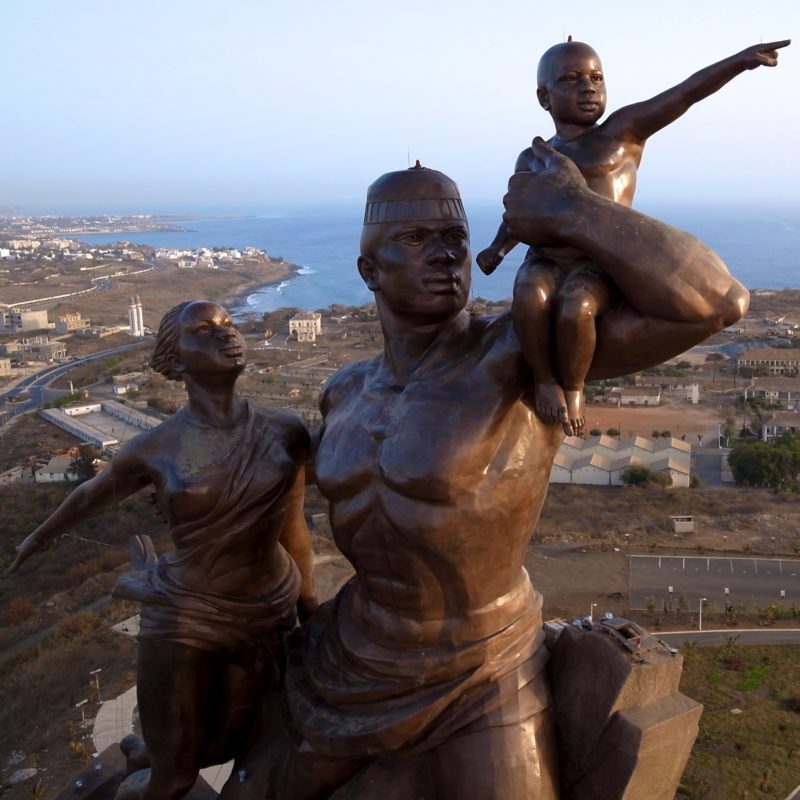
The family portrayed in the monument is only focused on moving forward, thus representing the future. In addition, the portrayal of the family emerging from the rocky base suggests that Africans are chipping away from the fragmented and terrible past into a free and glorious future.
According to President Wade 1314, the message of the African Renaissance Monument in Senegal is about:
Africa emerging from the darkness, from five centuries of slavery and two centuries of colonialism.
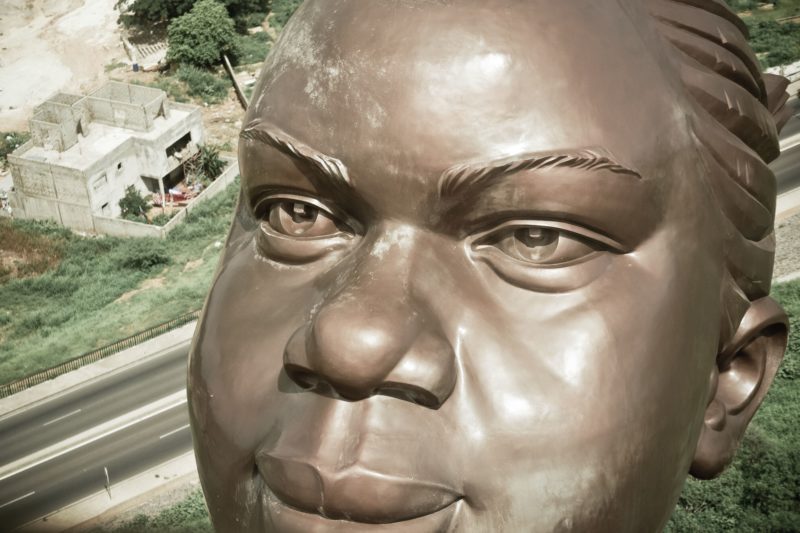
The original idea of African Renaissance
Additionally, the African Renaissance Monument is also slightly an intended revival of ideals and values of the African Renaissance itself. The concept of the African Renaissance was originally conceived and popularized by the late President Thabo Mbeki 1516 of South Africa in the late 1990s.
While this movement gained a great deal of momentum in the 1990s and a little bit in the early 2000s, it was somewhat forgotten with the introduction and development of new technologies in the modern age.

Having been a product of the ideals and era of the African Renaissance movement, he theorized the monument in the hope of breathing a new life into an important and unifying movement.
President Wade
Another meaning of the monument is to offer testament to the cultural legacy of the former Senegalese President Wade. He wanted, more than anything else, for the people of his country to remember him and his work developing and shaping the culture and arts of the country even after leaving public office.
Journalist Gilles Delafon, who co-authored Wade’s 2008 autobiography, said in Wall Street Journal interview 1718:
The problem of Wade for me is just one word: vanity.
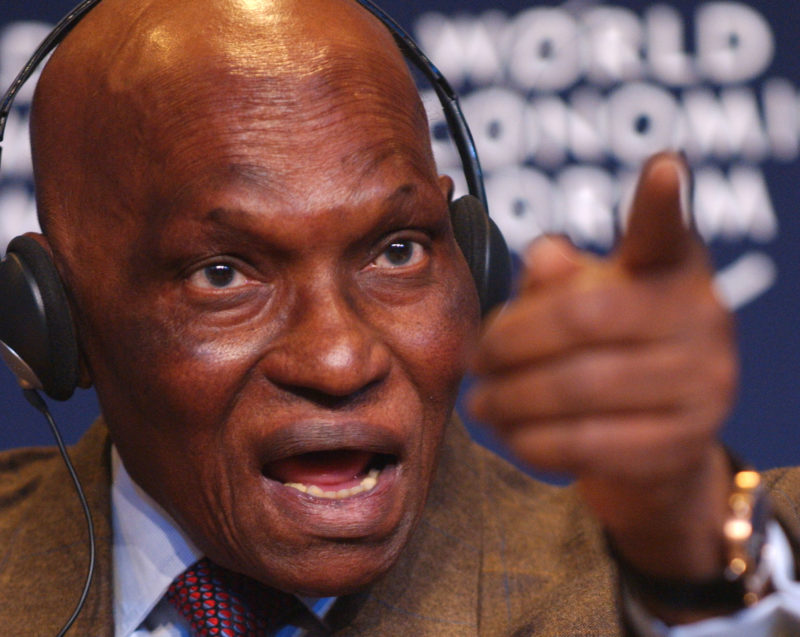
It is obvious that the original aim and representation of the monument were based and encapsulated in the political philosophy and ideals of President Wade. And the controversy that it stirred after the inauguration was did not arise from the representations mentioned above. Instead, it erupted over differing opinions.
Controversies
Political
Political
The African Renaissance Monument began to stir controversy 19 even before construction began. Many people, especially President Wade’s opponents, argued that the colossal monument says more about poor governance than the African renaissance.
The opposition leader Abdoulaye Bathily said 2021 that the statue is the product of a power-drunk president:
The economy has collapsed …The education system is in a crisis. The health system is in crisis. And yet Abdoulaye Wade is squandering public money. So all these things, people are seeing it, and it is creating so much frustration.
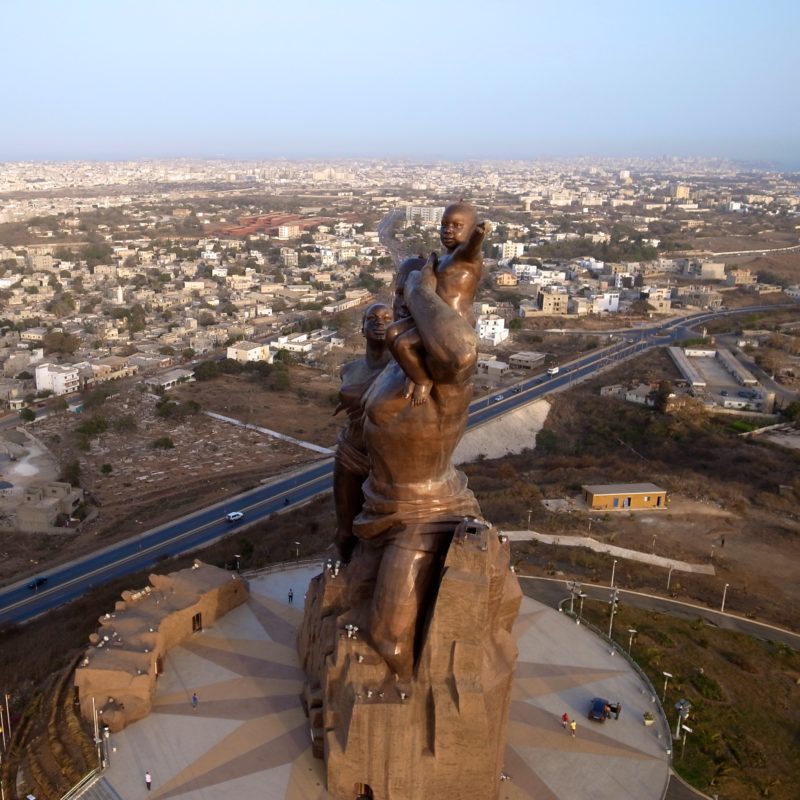
An opposition group known as Siggil Senegal asked the Senegalese people 2223 to “refuse to associate themselves with a fraudulent scheme designed to satisfy the fantasies of Abdoulaye Wade and to lay the foundations of the dynastic reign of Wade on our country.”
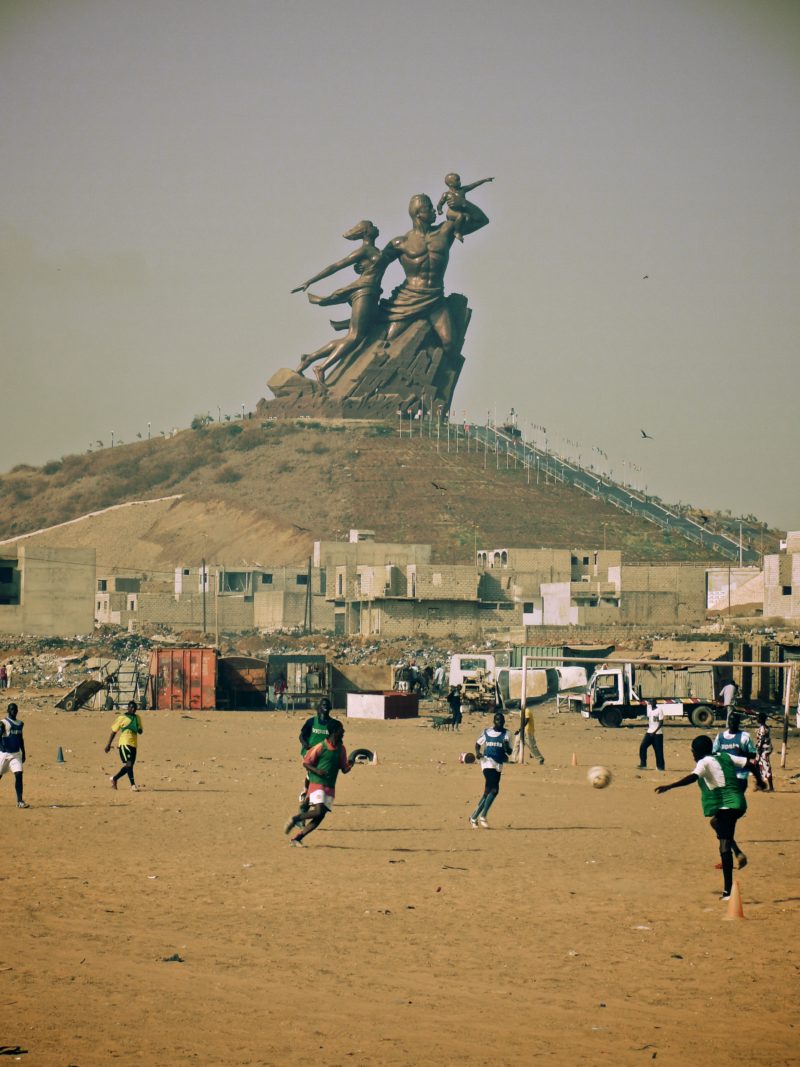
Excessive cost
The statue also stirred controversies in terms of expenses. Thousands of Senegalese went to the streets to protest against “all the failures of President Wade’s regime, the least of which is this horrible statue. 2425”
The monument has been sharply criticized for its cost of $27 million. The Deputy leader of the opposition at the time described it as an “economic monster and a financial scandal in the context of the current [economic] crisis. 2627”
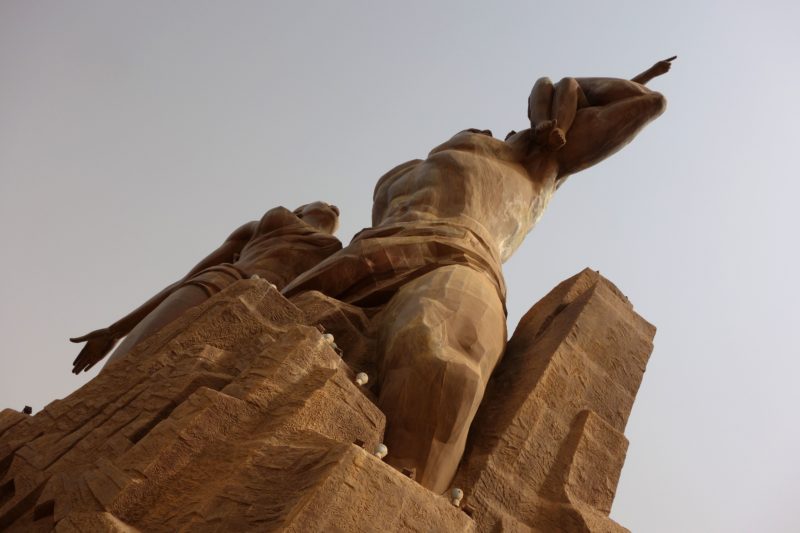
According to Le Quotidien newspaper, the cost is equivalent to the debts of the capital’s public hospitals, which are forced to turn patients away because resources are scarce.
The editor of the newspaper lamented 2829:
Perhaps in 10 years’ time, we might appreciate the statue more, but at the moment, people are angry. All the resentments, all the frustrations of the Senegalese have come to the surface; people feel this monument is simply mocking them.
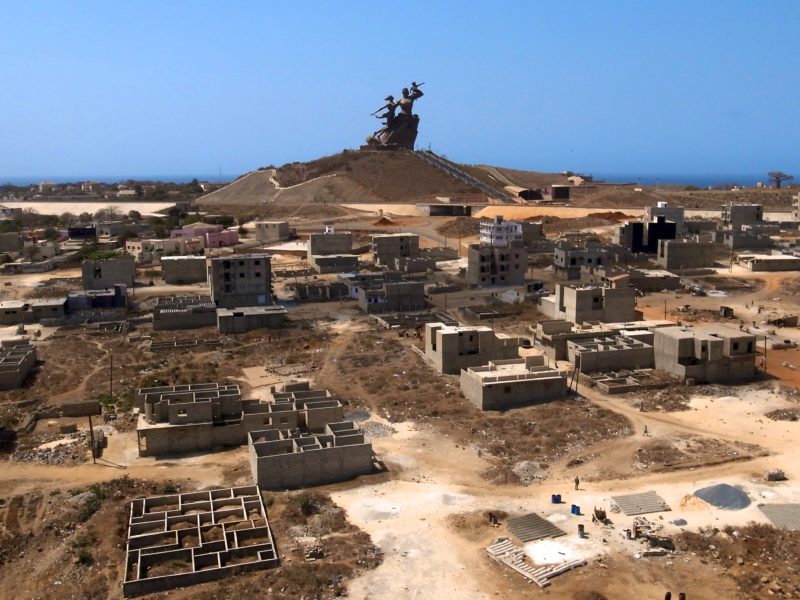
Bathily also had some sharp words for the president about the expense of putting up the statue. He said 3031:
He’s gone senile. Spending all this money when our education system is in crisis, when our infrastructure is crumbling, it’s outrageous.
The people living in the shadow of the colossal sculpture endure spiking food prices and increasingly frequent power outages, while those living in the poorer neighborhoods have their houses flooded every rainy season.
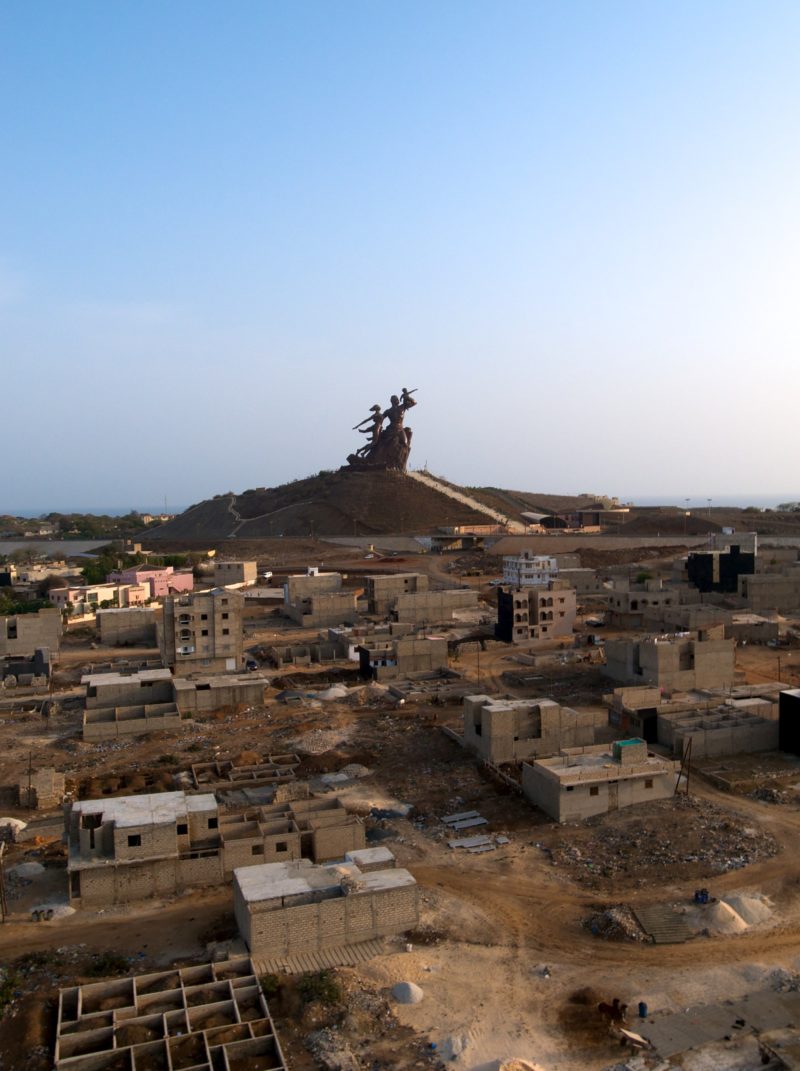
Intellectual rights
The issue soon spiraled further south when the president announced that he would take a 30% cut of any revenues the monument generated, pegging his “intellectual property rights” to an excerpt from a book published more than three decades ago when he pondered 3233:
If I were a sculptor, I would erect three personalities with their arms stretching out to embrace.
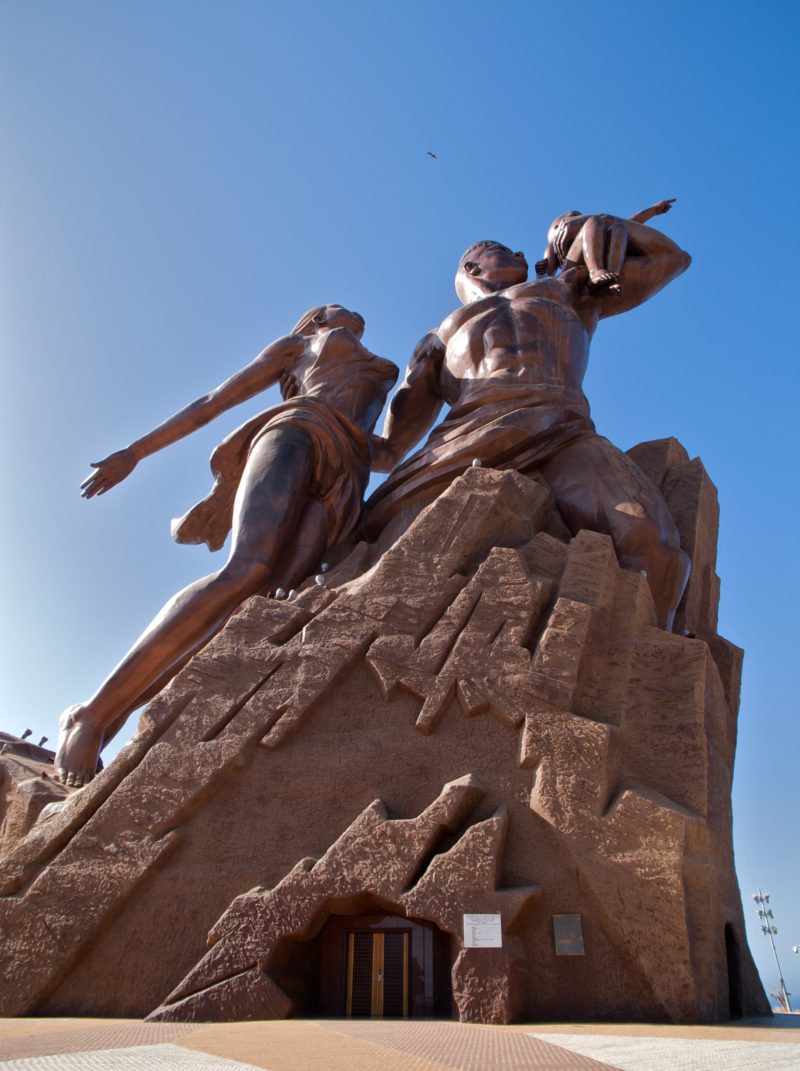
But opposition leaders sharply counteracted President Wade’s claim of 30% of the profits raised, insisting that the president cannot claim intellectual rights over ideas conceived as a function of his public office.
Style & working with North Korean artists
Having been built by Mansudae Overseas Projects, a North Korean sculpting firm known for producing numerous large-scale 34 statues and other public projects across Africa, the monument had a very poor reception by art critics worldwide. Some compared it to the once-abandoned Christopher Columbus statue project by Zurab Tsereteli 35 in Puerto Rico.
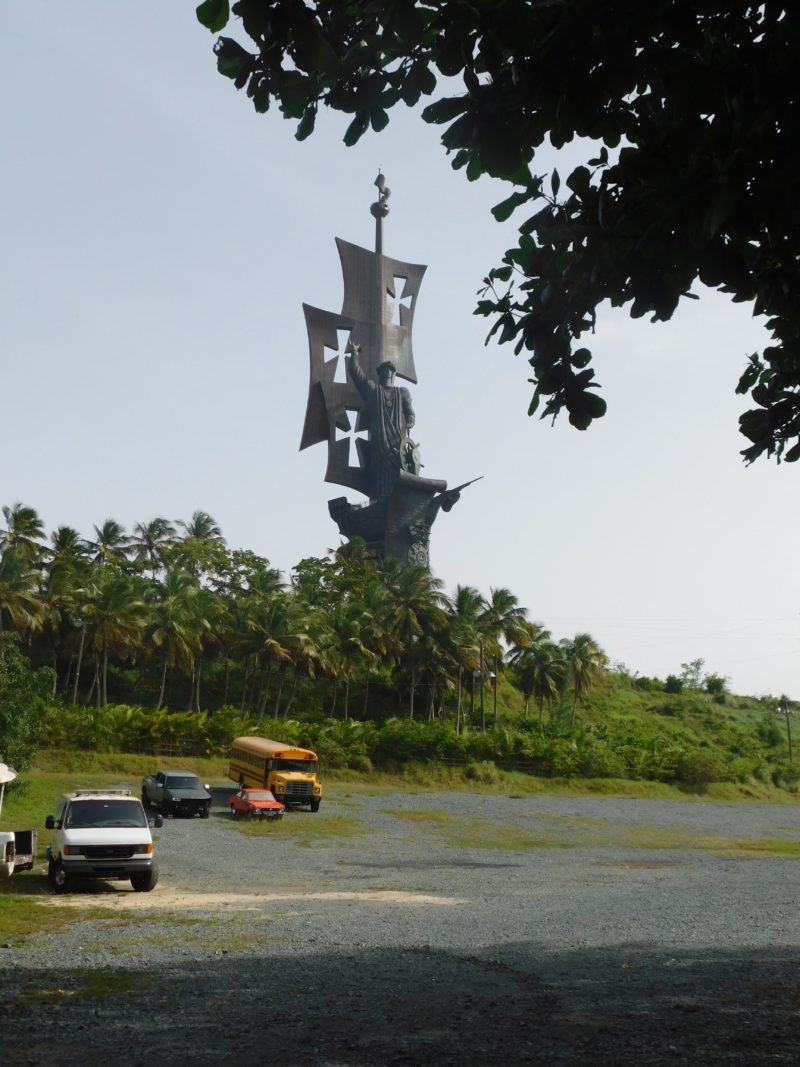
Senegalese journalist Ebrima Sillah stated that many local fine artists took offense to the fact that the president had commissioned a crew of 50 North Koreans to build the public sculpture. However, the president defended his decision of choosing foreign artists because they were known as experts in constructing large public monuments.
All productions of the Mansudae Overseas ProjectsWorld-renowned Senegalese sculptor Ousmane Sow, whose dramatic sculptures on the Pont des Arts attracted huge crowds in Paris, also criticized the use of the foreign workforce. He said that it was anything but a symbol of an African Renaissance and had nothing to do with art.
It’s a wasted opportunity. It’s an enormous canvas, but there is no detail. What we have ended up with is aesthetically childish and banal in the extreme. It is anything but a symbol of African renaissance and is nothing to do with art. The president’s motivation is totally personal; it is about leaving something behind. He’s not been brilliant on the political playing field, so instead, he has opted for a concrete legacy – literally.
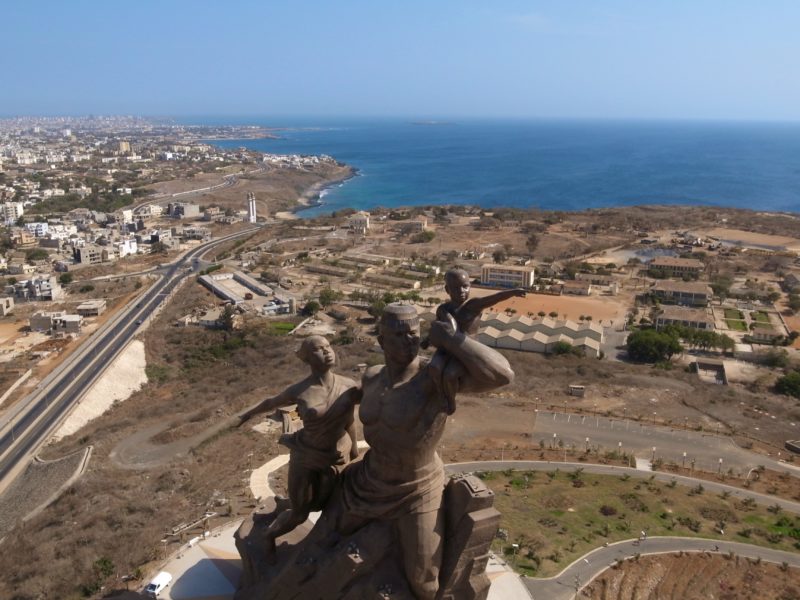
Religious
President Wade also attracted criticism for this monument in the form of imams, who termed it idolatrous. Senegal is a predominantly Muslim country, with up to 96 percent of the population estimated to be Muslim.
Some Muslims said that the monument, featuring a well-toned, bare-chested man sweeping a scantily dressed woman, revealing part of her breasts and thighs, and holding up high a nude baby, breached Islamic teachings by presenting the human form as an object of worship.

In deflecting criticism from Islamic religious leaders, President Wade argued that Christians prayed to a “man called Jesus Christ 3839“. Still, he had to put out some more fires, this time from Senegal’s Christian community, for likening Jesus to the statue.
One of the locals, 16 years-old Aisha Ndow, felt the statue is un-Islamic, inappropriate, and aesthetically un-African. She stated 4041:
Look at the woman; half her body is uncovered. You can see her breasts and her bare thighs. That’s not good for a Muslim. Really, this is not a good example for Africa – especially the way they are dressed. The father, you can see his body. The Child is completely naked. There’s too much nudity. The woman should be wearing something more proper, to show how Africans really dress.
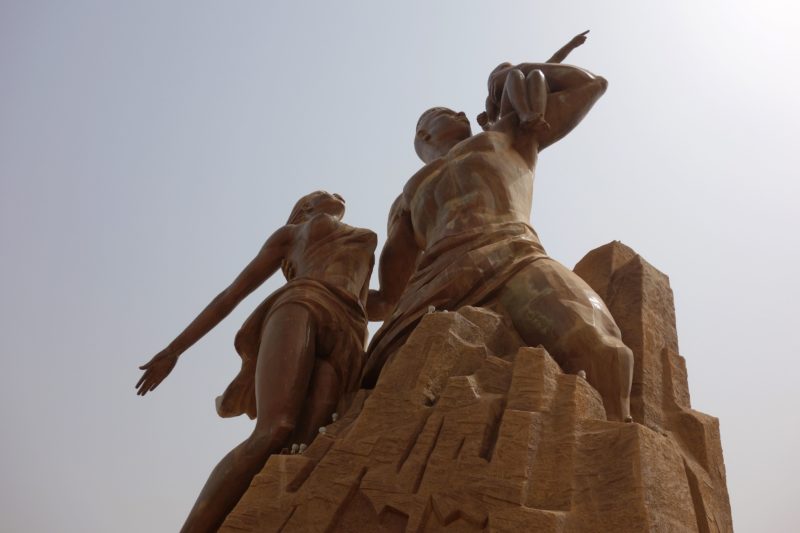
Facts
African Renaissance Monument location
African Renaissance Monument location
The monument is located atop one of the twin hills known as Collines des Mamelles, in the Ouakam suburb of Dakar, Senegal and dominates the area around Les Almadies.
Visit
-
Hours: Sun-Fri: 9:00 – 18:45h, Sat: 9:00 – 19:30h
-
Recommended visit time: Visitors have reported that the monument deserves a 1-2-hour visit
-
Facilities: Has toilets and a small cafe at the top
Hours: Sun-Fri: 9:00 – 18:45h, Sat: 9:00 – 19:30h
Recommended visit time: Visitors have reported that the monument deserves a 1-2-hour visit
Facilities: Has toilets and a small cafe at the top
At night, the monument is illuminated by a series of floodlight lamps surrounding it at the base as well as on both sides of the stairs leading up to the statue, making it fully visible even in the dark. Visitors have called the lights spectacular, mentioning the impressive view of Dakar with all its lights on from the top of the hill.
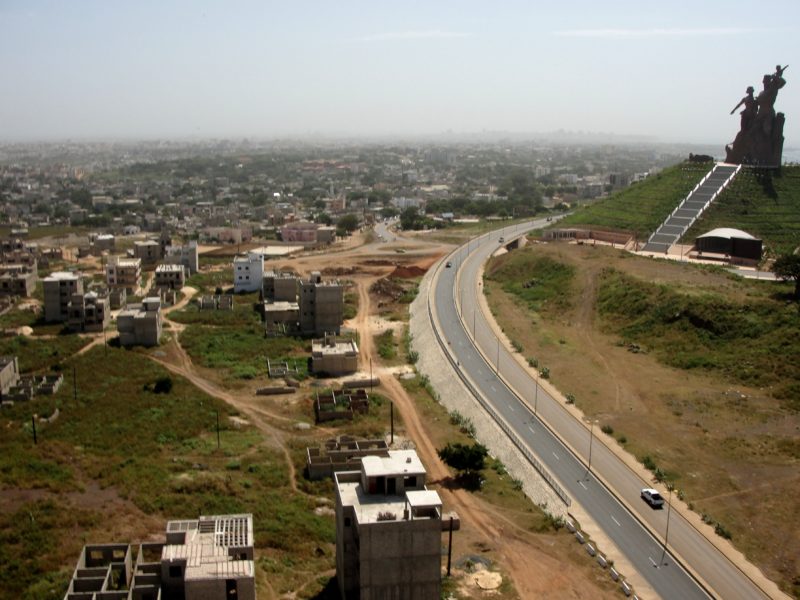
What is the size of the monument?
The African Renaissance Monument stands at 49 meters (161 ft) tall on a 100 meters hill, making it the tallest statue in Africa.
When comparing it to only the copper statue of New York City’s Statue of Liberty itself at 46 meters (151 feet), the African Renaissance Monument is slightly taller. However, the entire Statue of Liberty, including the pedestal, measures 93 meters (305 feet) from the ground level to torch, more than twice the size.
In comparison, Rio de Janeiro’s Christ the Redeemer is 28 meters (92 feet), roughly 43% smaller than the African Renaissance Monument.
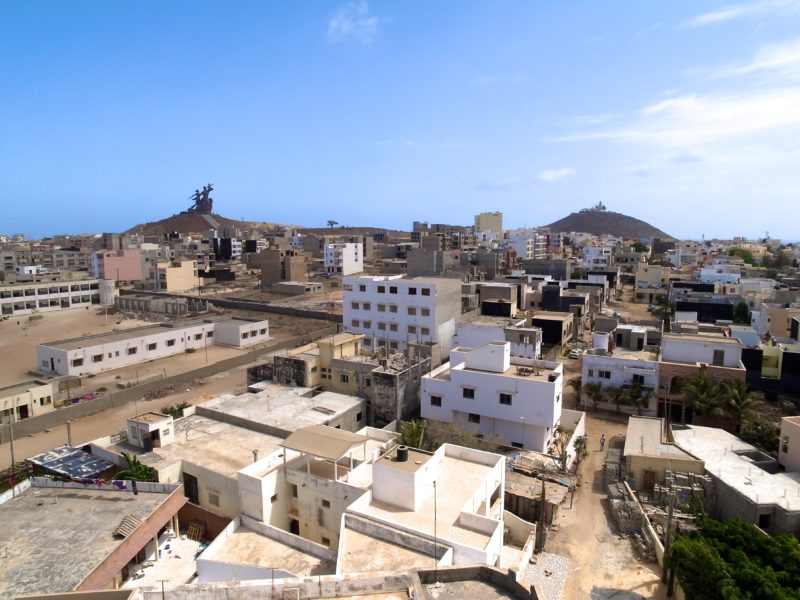
Entrance fee
Walking up the 198 steps to this publicly 42 accessible statue is free. However, you will have to pay around CFA6,500 or US$11 to take the elevator to the statue’s head, thereby contributing 30% towards Wade’s pension fund.
Foreigners/non-residents have reported varying entry fees, ranging from 5 USD (3,000 CFA) to 11 USD (6,500 CFA) per person. According to reviews 4344, Senegalese nationals get to enjoy the monument for about a third of those prices, making it considerably cheaper.
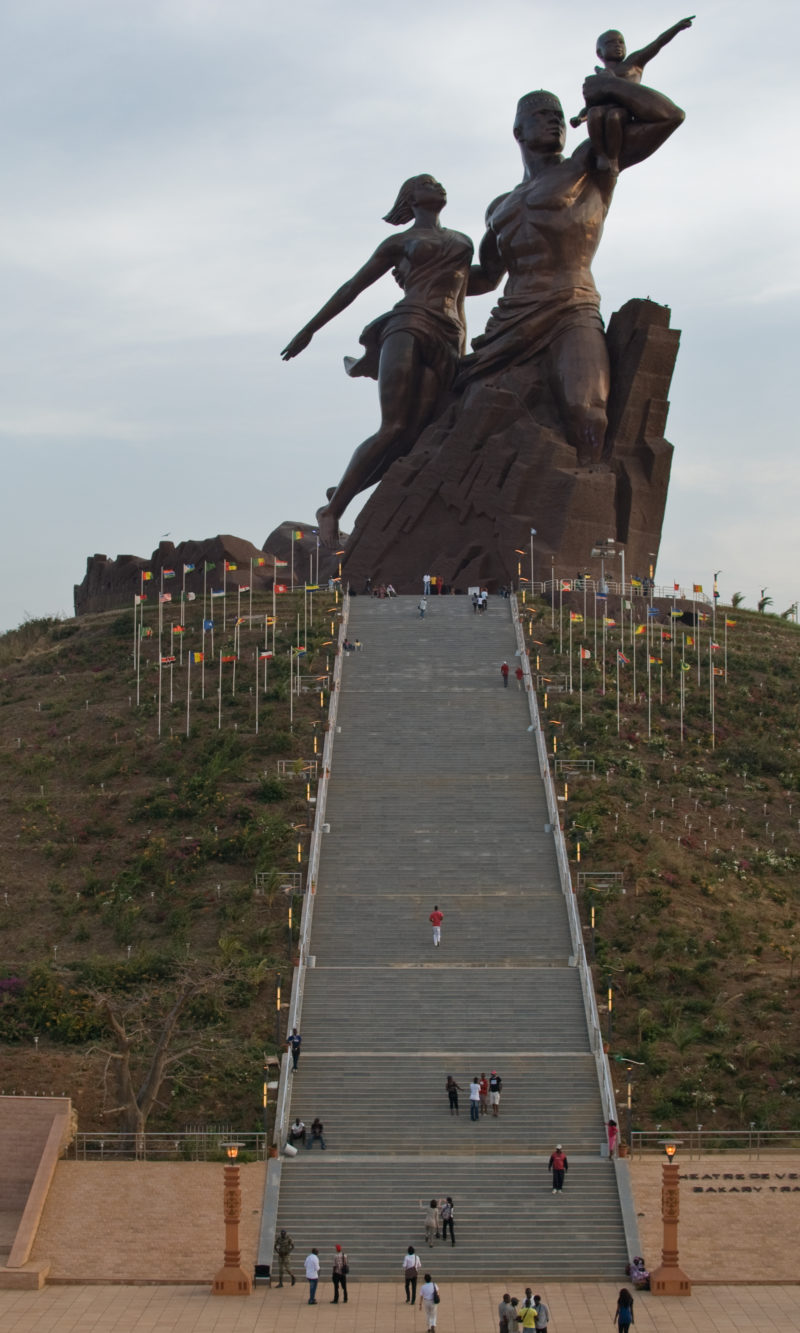
Tour
The admission price includes a guided tour, with the guide speaking French or English. You’ll get a chance to visit all the floors and finally enter the observation deck inside the head of the man, using an elevator to go all the way to the top. The vantage point provides an unobstructed view of the entire city from the highest point in Dakar.
Inside the statue
Visitors can pay to go inside the male statue and take the elevator to the giant head for some stunning vistas across the city and the Atlantic Ocean. Inside, the man’s hat also provides the views of the westernmost point of the entire African content.
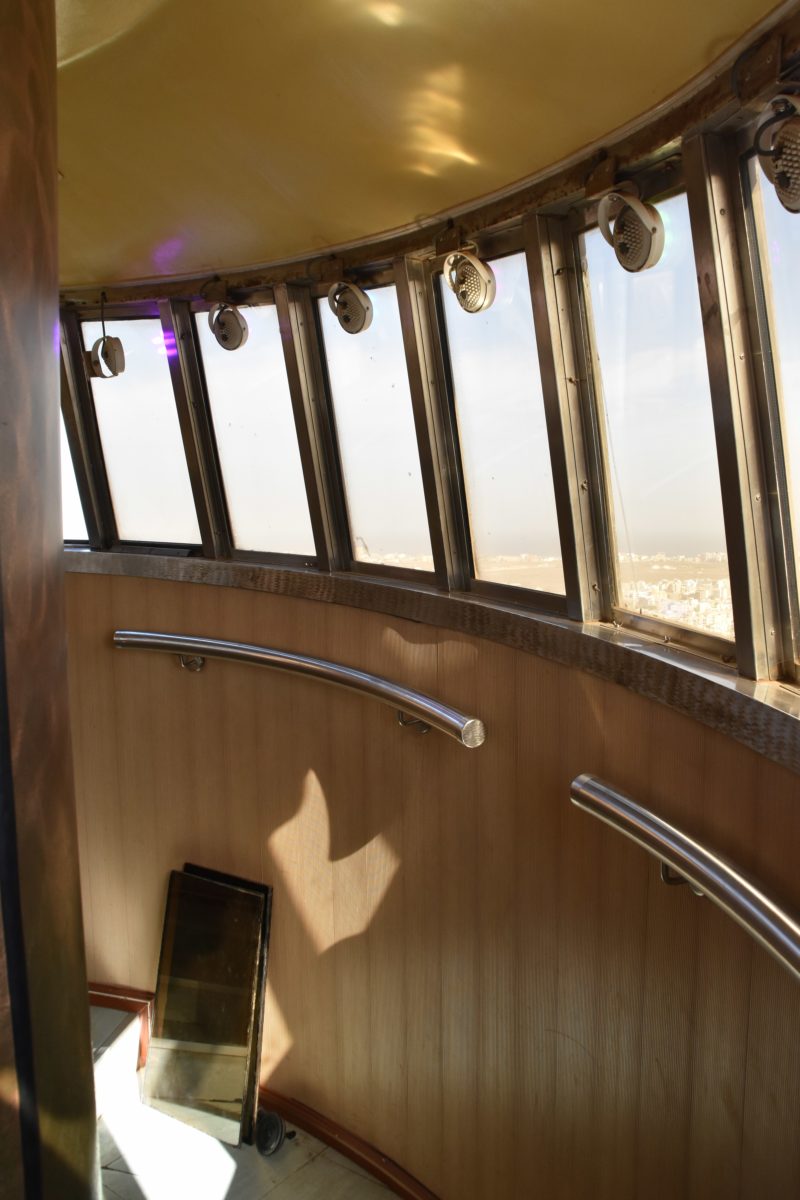
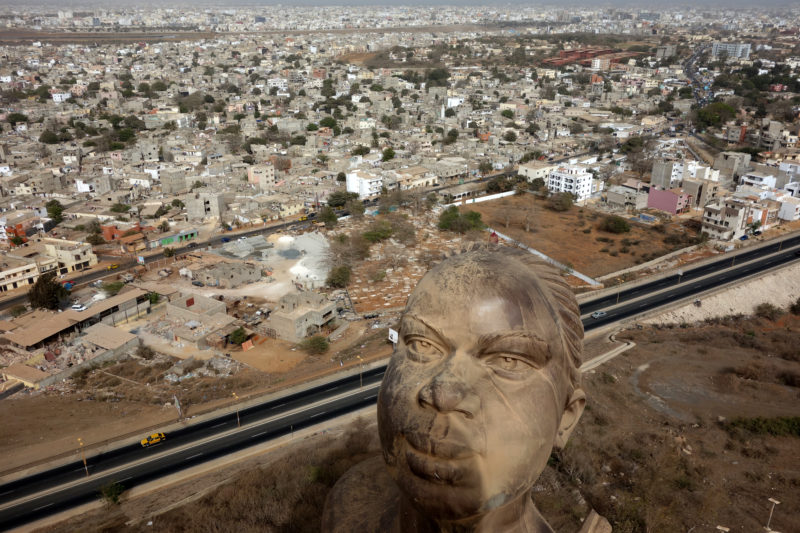
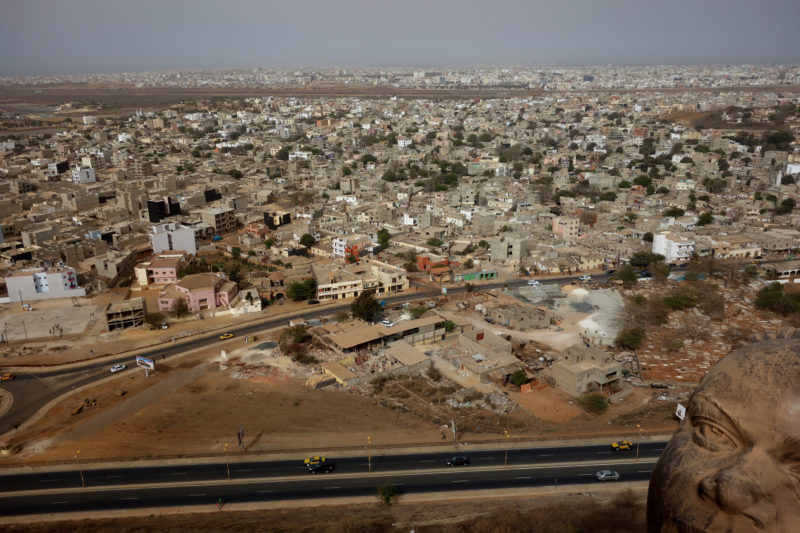
Inside the base is an exhibition space dedicated to celebrating great African leaders and other influential figures of African origin. There are also several artworks on view with visions of the continent’s prosperous future. You will also find an exhibition by local artists that gets replaced every three months.
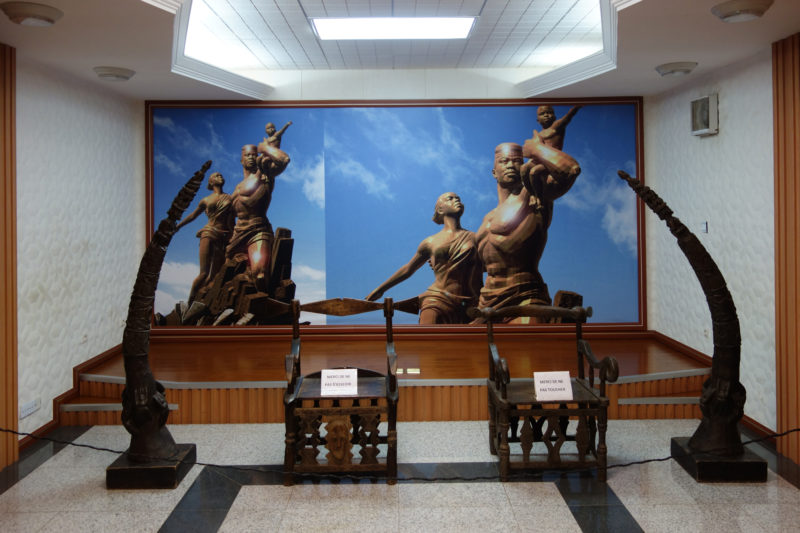
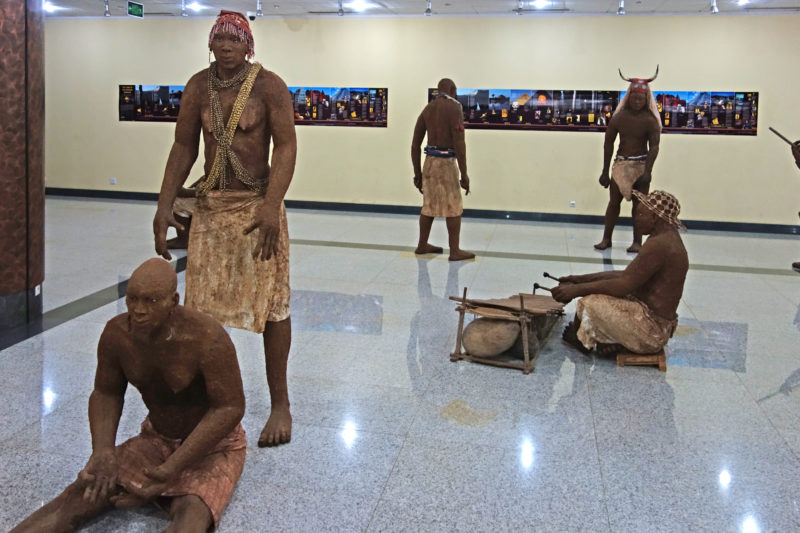
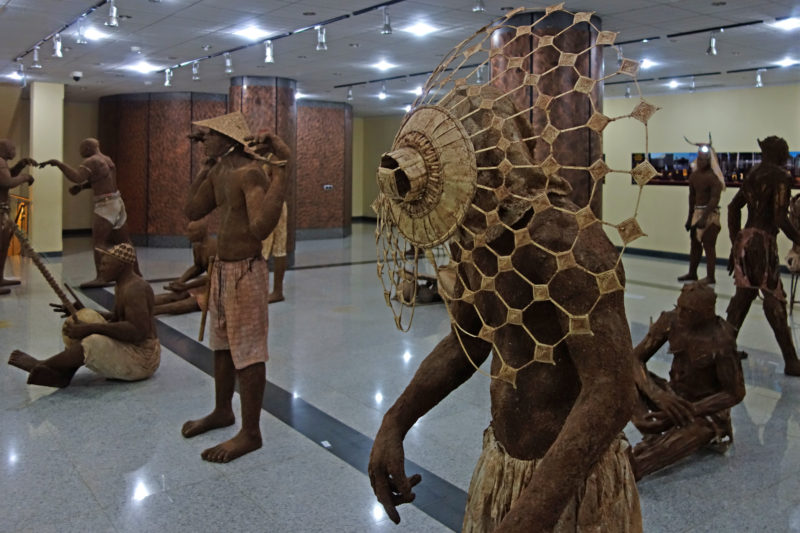
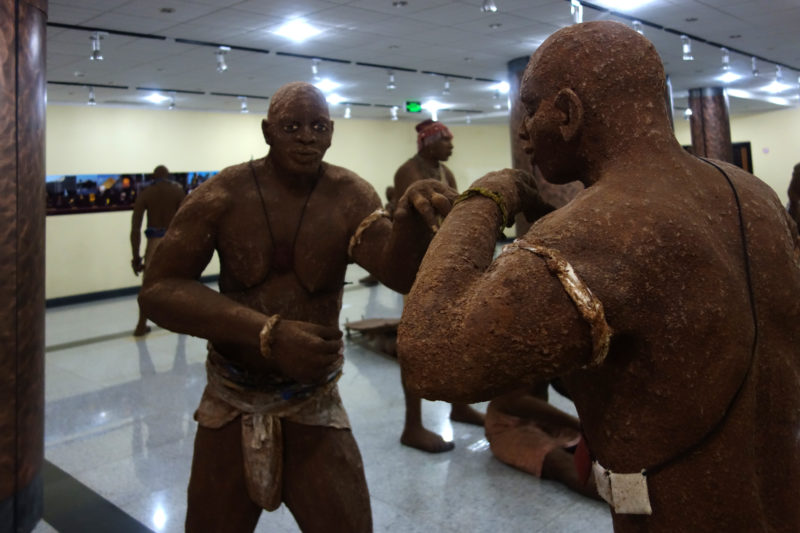
Replica
In 2016, South Korean 45 artist Onejoon Che 46 presented a replica of the African Renaissance Monument at the Things Fall Apart 4748 show at Calvert 22 Foundation in London. It was among the many series of photographs and models of African monuments displayed by the South Korean artist and looked very similar to the original statue standing in Dakar.
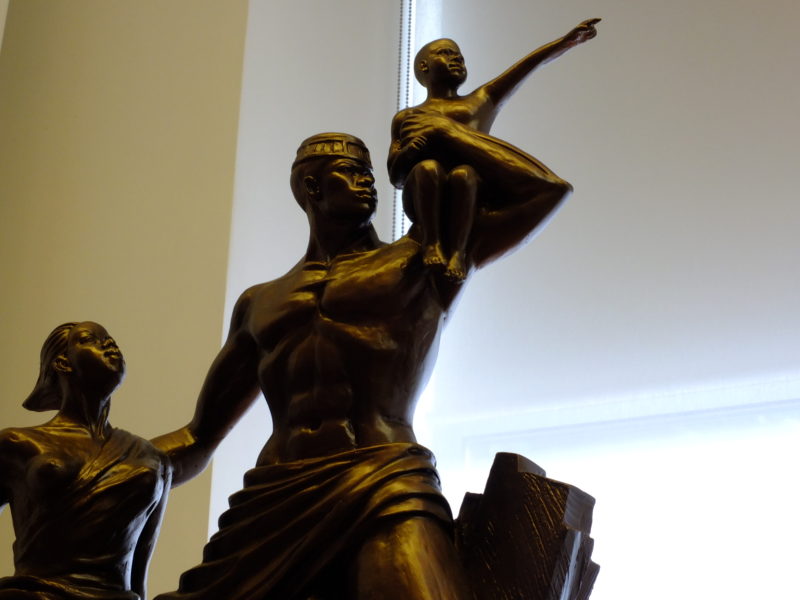
The replica is part of Che’s documentary film entitled Mansudae Master Class 4950 (2013/2015), which was on view at the Seoul Metropolitan Museum of Art and consists of a series of video installations and miniature replicas of “the propaganda sculptures”.
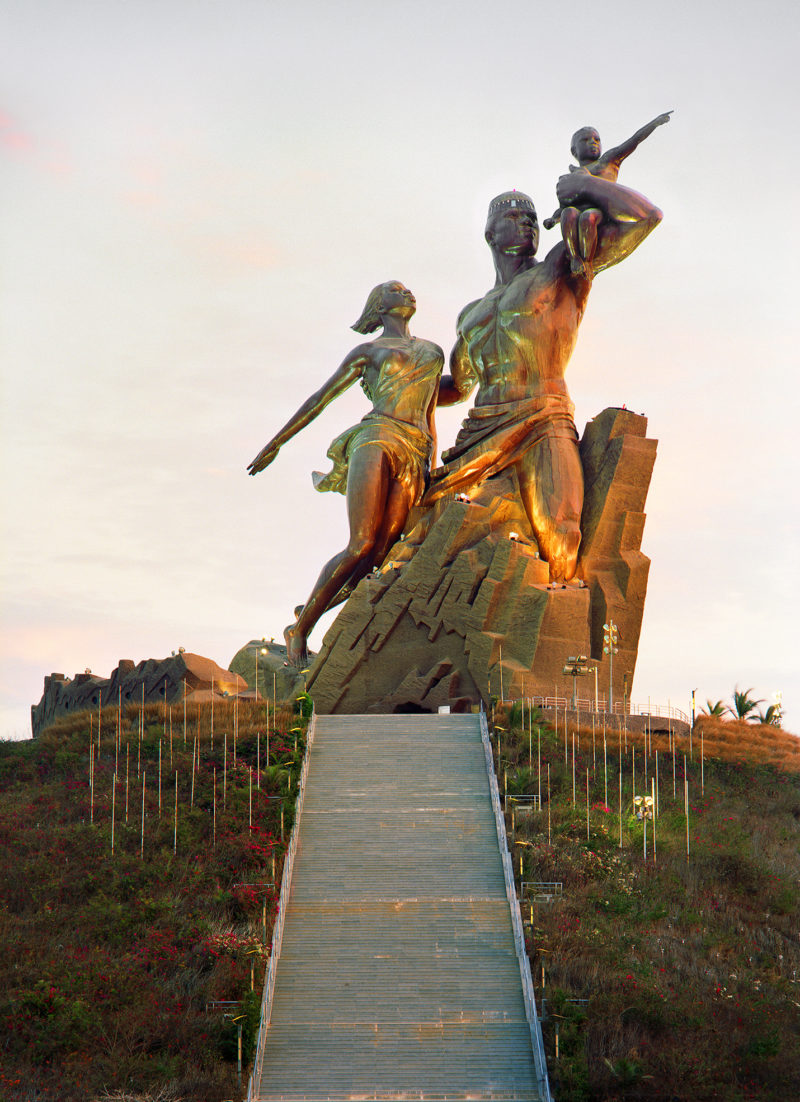
Final words
Despite the controversies around the construction of the African Renaissance Monument in Senegal’s capital Dakar, the statue is still standing tall today and offers one of the best views in the city, if not the continent.
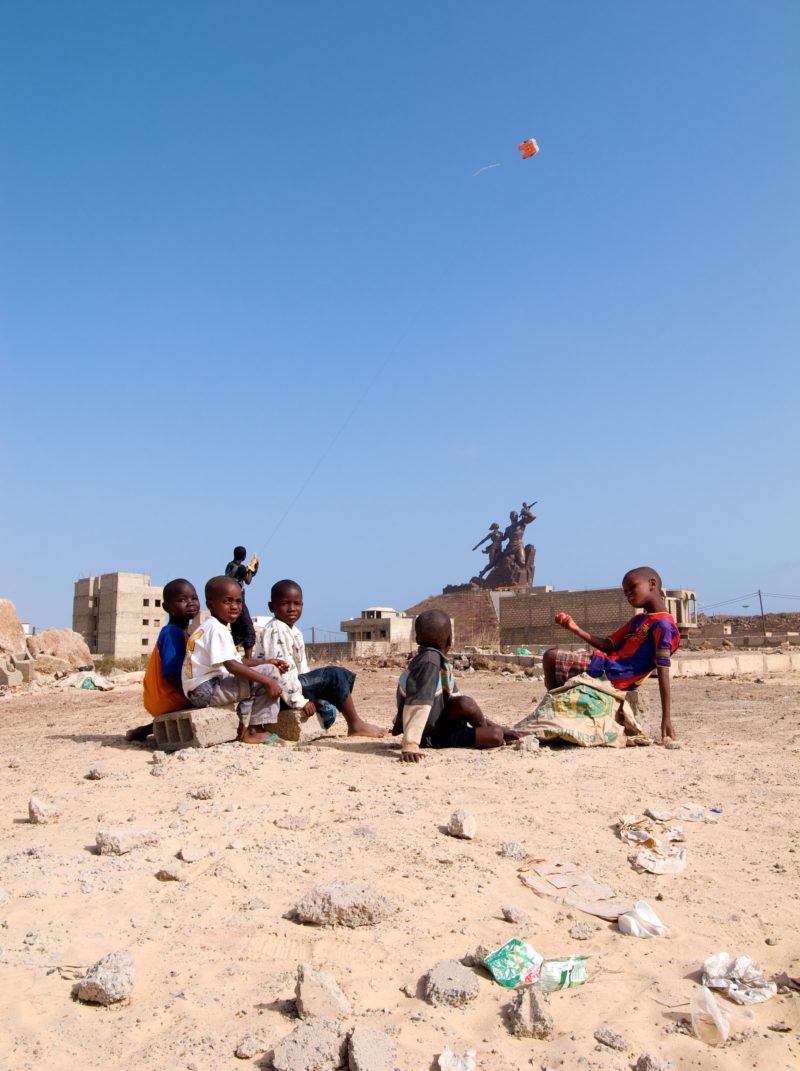
More North Korean-built sculptures
Explore nearby
Dakar, Senegal
 North Korea's oversea sculptures0 km away
North Korea's oversea sculptures0 km away
